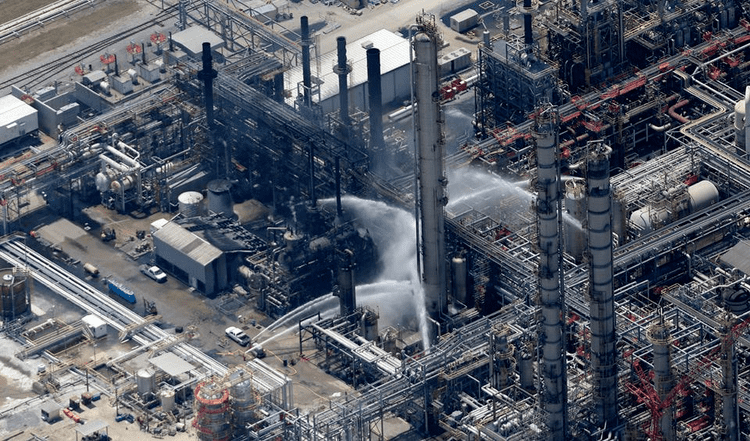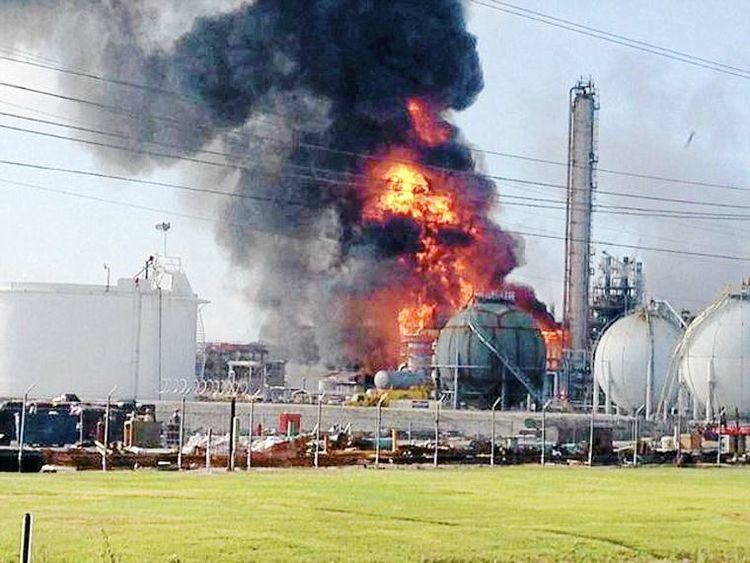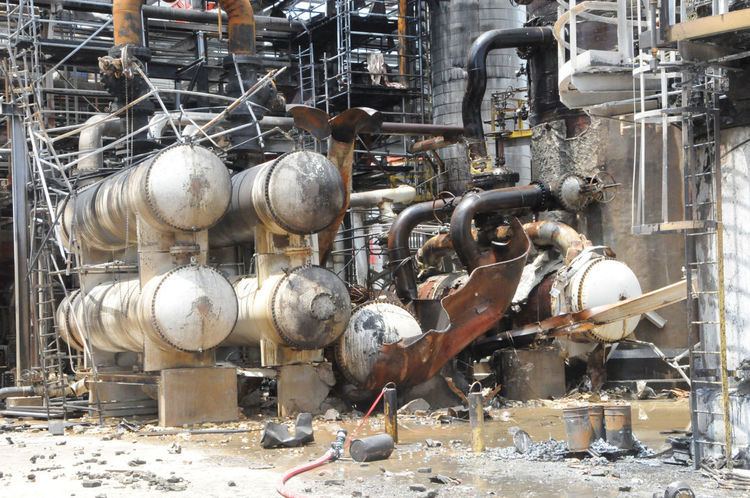Non-fatal injuries 114 Total number of deaths 2 | Date 13 June 2013 Injuries 114 | |
 | ||
The Williams Olefins Plant explosion occurred on June 13, 2013 at a petrochemical plant located in Geismar, an unincorporated and largely industrial area 20 miles (32 km) southeast of Baton Rouge, Louisiana. The explosion was triggered by the "catastrophic" failure of a heat exchanger. Two workers were killed and 114 injured. The U.S. Occupational Safety and Health Administration (OSHA) and the U.S. Chemical Safety and Hazard Investigation Board (CSB) launched investigations to determine how and why the heat exchanger failed. Rafael Moure-Eraso, CSB chair, addressing the U.S. Senate Committee on Environment and Public Works on June 27, said: "there was a catastrophic failure involving a heat exchanger and associated piping which broke loose from a distillation tower...It is too soon in our investigation to tell why the equipment failure occurred."
Contents
The effects of the explosion were felt several miles away. Senator Troy Brown [D-Napoleonville], who was at his home five miles from the plant when the blast occurred, said, "For about a good two to three seconds, it felt like an earthquake." A shelter-in-place order was issued to residences and businesses within a two-mile (3.2 km) radius of the plant.

Background
The Williams Olefins Plant was established in 1968 by Allied Chemical and transferred to Williams Olefins following a merger with Union Texas Petroleum in September 1999.

The plant produces ethylene, propylene and other products through steam cracking of ethane and propane. This process uses high temperatures to break long-chain hydrocarbons into shorter-chain olefins. The ethane is diluted with steam and briefly heated in a furnace without the presence of oxygen. Typical reaction temperatures are very high, at around 1,560 °F (850 °C), but the reaction is only allowed to take place very briefly. After the cracking temperature has been reached, the gas is quickly quenched in the heat exchanger to stop the reaction. The plant produces 40,000 tons (36,000 tonnes) of propylene and 650,000 tons (590,000 tonnes) of ethylene every year for use in the plastics industry.

The explosion was the first major incident in the plant's history, although there had been numerous leaks of flammable gases in recent years. On December 18, 2012 workers discovered "a visible leak" of propylene gas. According to a report submitted by Williams Olefins to the Louisiana Department of Environmental Quality (DEQ), 514 pounds (233 kg) of propylene gas escaped. Williams Olefins said, "Piping corrosion under insulation is believed to be a significant factor in this incident [...] This was a small isolated corrosion location that had not been previously found." The Times-Picayune of New Orleans reported that there had been leaks of 100 pounds (45 kg) each of ethylene and volatile organic compounds in 2010, 93 pounds (42 kg) of benzene in 2009, and 4,000 pounds (1,800 kg) of propylene in 2008.
Internal investigation

On October 3, 2013 Williams Olefins announced the results of their internal investigation. The company said that a rupture in the heat exchanger caused a vapor cloud "which was ignited by an unknown source, causing the explosion."
OSHA investigation
On December 11, 2013 OSHA cited Williams Olefins for six process safety management standard violations, including one willful, and fined the company $99,000. Dorinda Folse, OSHA's Baton Rouge area director, said: "Williams Olefins violated safety and health standards which, when followed, can protect workers from hazardous chemicals. It is the employer's responsibility to find and fix workplace safety violations and to ensure the safety of its workers. Failing to do so cost two workers their lives." The five serious violations, where there was "substantial probability that death or serious physical harm could result from a hazard about which the employer knew or should have known", were:
The willful violation—defined as one "committed with intentional, knowing or voluntary disregard for the law's requirements, or with plain indifference to worker safety and health"—was the company's failure to develop clear, written procedures for how to change and put idle pressure vessels into service.
Lawsuits
In the first civil trial regarding the explosion, four workers filed suit against Williams Olefins LLC and parent company Williams Companies, Inc. for their alleged negligence. The representation for the Plaintiffs, Arnold & Itkin LLP, argued that Williams Companies was ultimately responsible for the explosion because they maintained control over the plant’s daily operations and approved its safety measures. The representation for the Defendants argued that Williams Olefins, as the holding company for the plant, was primarily responsible for the facility’s operations. Plaintiff’s attorneys maintained that the parent company had control over the plant’s operations and so could be held responsible for the explosion. After 3 weeks of trial, the jury found Williams Companies, Inc. 95% responsible for the Geismar blast, with 3% liability assigned to Williams Olefins LLC. The plaintiffs were granted a total award of $13.6 million, which was divided among the four men and their representatives.
